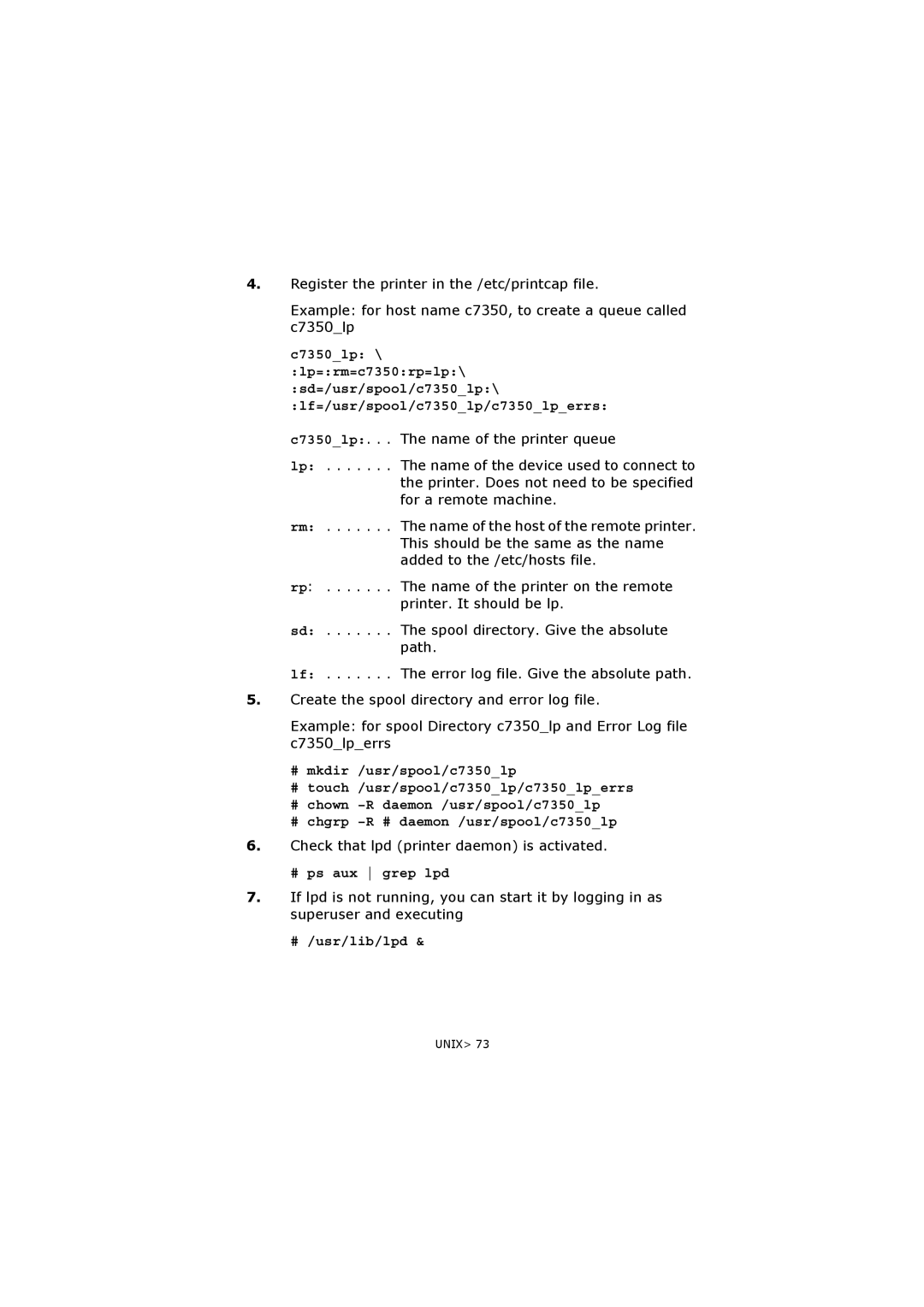4.Register the printer in the /etc/printcap file.
Example: for host name c7350, to create a queue called c7350_lp
c7350_lp: \ :lp=:rm=c7350:rp=lp:\ :sd=/usr/spool/c7350_lp:\ :lf=/usr/spool/c7350_lp/c7350_lp_errs:
c7350_lp:. . . The name of the printer queue
lp: . . . . . . .
rm: . . . . . . .
rp: . . . . . . .
The name of the device used to connect to the printer. Does not need to be specified for a remote machine.
The name of the host of the remote printer. This should be the same as the name added to the /etc/hosts file.
The name of the printer on the remote printer. It should be lp.
sd: . . . . . . . The spool directory. Give the absolute path.
lf: . . . . . . . The error log file. Give the absolute path.
5.Create the spool directory and error log file.
Example: for spool Directory c7350_lp and Error Log file c7350_lp_errs
#mkdir /usr/spool/c7350_lp
#touch /usr/spool/c7350_lp/c7350_lp_errs
#chown
#chgrp
6.Check that lpd (printer daemon) is activated.
#ps aux grep lpd
7.If lpd is not running, you can start it by logging in as superuser and executing
#/usr/lib/lpd &
UNIX> 73
